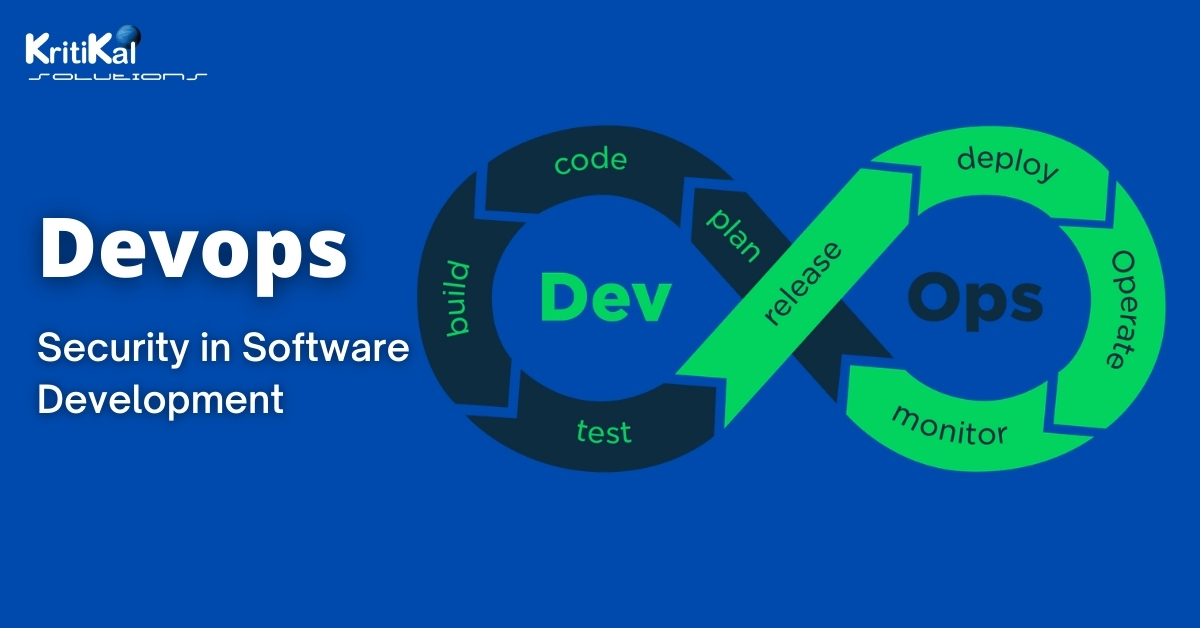You perhaps got unsettled when the most devastating ransomware attack wannacry wreaked havoc and struck tens of thousands of computer systems across 104 countries worldwide. Did you? This was not the only cyber-attack that brought vast disruption in the business world. Previously, we have seen plenty of nefarious malware and security attacks like Heartbleed, DDoS, Man in the Middle (MITM), malvertising, and more that hurled an overwhelming hurricane in the connected business ecosystem. Therefore, taking a step ahead in an increasingly insecure environment created by hackers is always the right decision to safeguard your mission-critical business applications.
In a quest to minimize the impact of a possible future attack, companies are getting more attentive towards integrating security measures into their development environment. DevOps which is gaining traction nowadays amongst IT pioneers holds the capability of automating security throughout the software development lifecycle to create better and bug-free code. DevOps isn’t only about allowing your enterprise to enhance performance and execute code exponentially faster than your rivals, but also about transforming the way developers look at application security.
A recent survey report from the software automation and security company SonaType revealed that DevOps teams are increasingly embracing security automation to create a better and safer version of the software.
Just like security tends to play a pivotal role in organizations with mission-critical IT operations, the same thing is true with DevOps. As developers and operations teams find lucid compatibility by working together to release quality software faster, they are constantly seeking out other areas to improve. Moving ahead to build a safer software application is the next logical step.
By 2019, around 70% of enterprises focused on DevOps will have realized the importance of integrating security measures into the foundations of their DevOps practices.
Source: Gartner
Mitigating security infringement with DevSecOps
Since DevOps has become the new norm and security becomes an ever-important part of modern-day business, teams should focus on building security into DevOps practices. Coined by analyst Neil MacDonald in 2012, Gartner terms this DevSecOps. The purpose of DevSecOps is to create a mindset that “everyone is responsible for security” with the intent of safely distributing security decisions at pace and scale to those people who are responsible for the highest level context without compromising the safety needed.
DevOps + Security= DevSecOps
Here are the top 4 key elements introduced by Damon Edwards and John Willis (DevOps Experts at DevOps Cafe) to integrate security into DevOps-
Culture
When you hear DevOps, it strikes a chord with buzzwords like continuous delivery, integration, and automation. Besides these principal elements, there’s a bigger piece of the puzzle that we aren’t familiar with yet: the DevOps culture plays a key role in ensuring security. Generally, DevOps is more about the culture in comparison to the tools. The DevOps practice is based on breaking down the silos in the organization and assigning teams with more responsibility for each project, instead of serving their singular role. This culture propels teams to work jointly to fix broken processes and support innovation. Involving developers, IT managers, team leads, architects, and operations engineers to understand the new risks DevOps brings to the board– and having a robust security program in place to eliminate those risks–is the first crucial step towards converging DevOps and Security together.
Automation
Integrating security into DevOps is a self-fulfilling prophecy. As teams working on the DevOps model automate the security-related tasks and find vulnerabilities at earlier stages of the development lifecycle, the cost of releasing a robust software gets reduced. To sprint with the speed of DevOps, automating security testing is the only way to survive in this wildly changing ecosystem. Manual testing is not a scalable option at a reasonable price tag. This is because secure code requires frequent reviews and they can’t be done 10 to 100 times a day on tidbits of code. Hence, automating security testing and integrating security measures with developer tools is the prudent way to build a vigorous application security program in a DevOps environment.
According to a survey, 58 percent respondents from mature DevOps companies stated that they have automated security as part of their continuous integration (CI) practice, but CI is not the only part of the SDLC reaping benefits from automation.
Measurement
Though analytical tools can provide all the data in the world, but measuring how ‘good’ an application is in terms of quality, is a tricky plot. DevOps majorly improves visibility across the processes and development lifecycle, enabling anyone in the DevOps team to know what’s going at any particular level. DevOps metrics are drawn from automated tools that give a clear picture of what’s happening at each stage via a central dashboard. Always make sure that your tools track individual and overall security infringements triggered in a build, the time it takes to find them, and the time it takes to fix them. Thus, capturing the activities constantly on the security standing of a build, project, and the company as a whole is quite important for a perfect DevSecOps ecosystem.
Sharing
The Security team must be a part of the communication chain because collaboration is a crucial aspect in DevOps. Finding common resolution on the challenges that each team faces is a great way to achieve success. And while the security team is aware of the pain points of other teams it enables them in finding ways to improve security processes. As a result, the rest of the organization will be more focused on taking more responsibilities when it comes to application security. When people in a company have a broader view than their own key responsibilities areas, collective ownership will emerge.
Takeaway
“Software should bend but not break”, said Hasan Yasar, technical manager at Carnegie Mellon University. This shift in mindset to a bend-don’t-break allows a lot more flexibility when it comes to dealing with security attacks. Therefore, integrating security into DevOps not only paces up the development and operations process but also secure software applications from perilous bites of bugs.
At KritiKal Solutions, we understand how important is to integrate security into your DevOps practices. Backed by a pool of experienced developers, testers, security architects, and operations engineers, we are able to focus our expertise to not only enhance the pace of the software release but also their security. Get in touch with us to tap into more info on DevOps.



